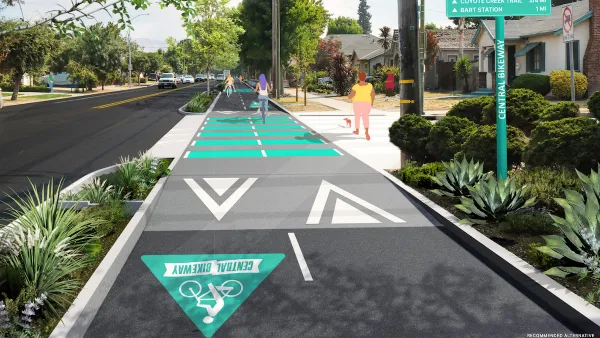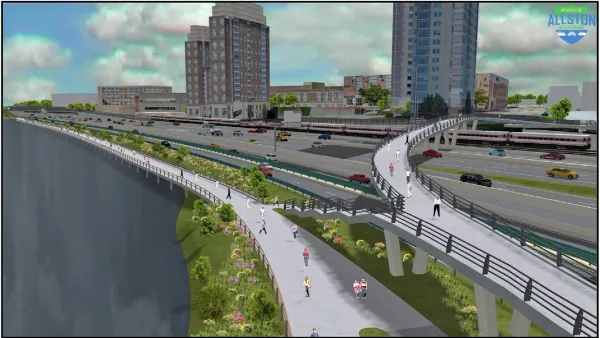The President’s proposed 2026 budget would keep spending roughly the same for transit and rail and eliminate over $5 billion in funding for EV charging infrastructure.

What does Trump’s budget mean for transportation? In a piece for Smart Cities Dive, Dan Zukowski outlines five key takeaways.
According to Zukowski, “The Federal Transit Administration’s budget would remain in line with the current fiscal year at $21.2 billion, including $4.3 billion in advance appropriations from the Infrastructure Investment and Jobs Act. That is $1 billion less than authorized for fiscal 2026 by the infrastructure law.”
The proposed budget would increase public transit funding by 1.5 percent and keep Amtrak spending essentially the same while shifting spending from the Northeast Corridor to national rail projects. It call for $3.8 billion in Capital Investment Grants, but eliminates “certain IIJA allocations for New Start, Core Capacity, Small Starts and Expedited Project Delivery Pilot Program projects.” The budget requests an additional $500 million for the Consolidated Rail Infrastructure and Safety Improvements program, which funds passenger rail improvements.
The budget cuts roughly $5.7 billion in electric vehicle charging programs.
FULL STORY: 5 takeaways from Trump’s proposed 2026 budget for rail and public transit

Planetizen Federal Action Tracker
A weekly monitor of how Trump’s orders and actions are impacting planners and planning in America.

Silicon Valley ‘Bike Superhighway’ Awarded $14M State Grant
A Caltrans grant brings the 10-mile Central Bikeway project connecting Santa Clara and East San Jose closer to fruition.

Amtrak Cutting Jobs, Funding to High-Speed Rail
The agency plans to cut 10 percent of its workforce and has confirmed it will not fund new high-speed rail projects.

Tesla Announced Human-Assisted Robotaxi Launch in San Francisco — But State Regulators Say Otherwise
The electric carmaker appears to be both-sides-ing its impending launch, telling regulators it will have human drivers on board while touting the project as ‘robotaxis’ to investors.

Indianapolis Encourages Tactical Urbanism With Lending Library, Grant Program
Residents can apply to receive assistance with traffic calming projects that can provide valuable data and lead to permanent changes.

Jacksonville Completes Park Street Road Diet
The half-mile corridor now features new bike lanes and sidewalks, as well as roundabouts and new landscaping.
Urban Design for Planners 1: Software Tools
This six-course series explores essential urban design concepts using open source software and equips planners with the tools they need to participate fully in the urban design process.
Planning for Universal Design
Learn the tools for implementing Universal Design in planning regulations.
Yukon Government
Caltrans
New Jersey Institute of Technology
Mpact (founded as Rail~Volution)
City of Camden Redevelopment Agency
City of Norman, Oklahoma
City of Portland
City of Laramie





























